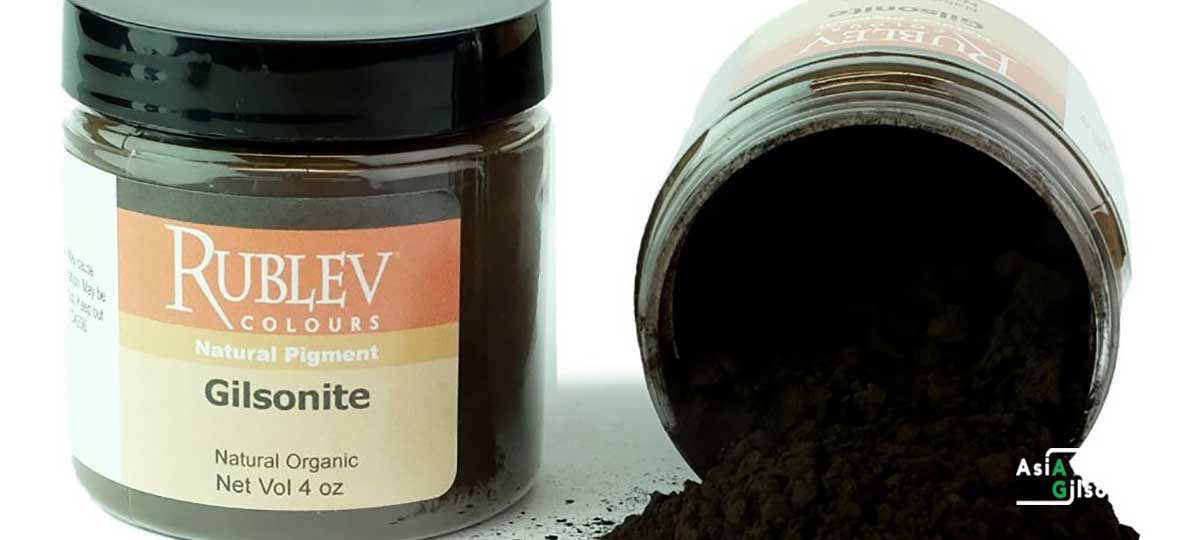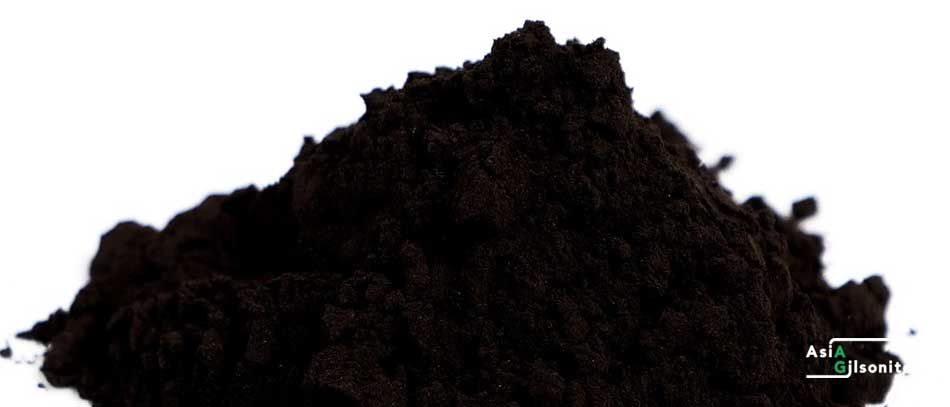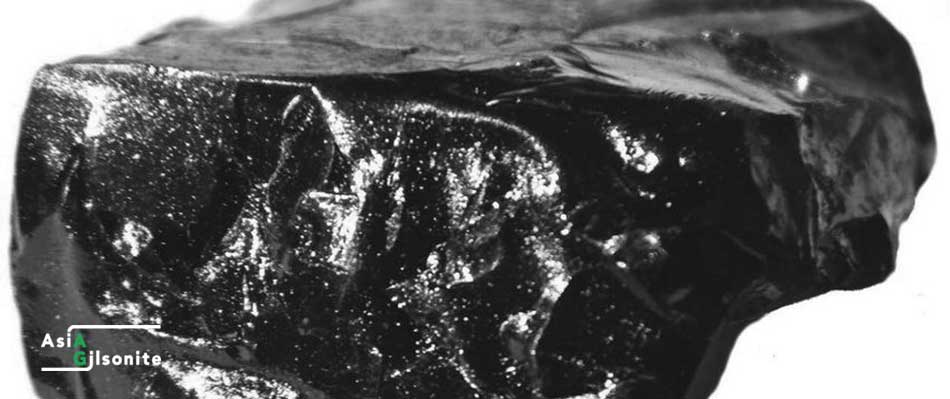In this article, we try to provide information about the color of Gilsonite. This material can be used in various industries due to its amazing properties and effects. In addition to Gilsonite color, we will also examine the types of gilsonite. Stay with us.
Gilsonite color
Natural asphalts are known as asphaltum. Asphaltum is a dark-colored binder substance made up of complex, non-volatile hydrocarbon chains with a high molecular weight. These might come from two sources: petroleum derivatives and natural sources. Asphaltum is made from petroleum, but only after the volatile fractions have evaporated, leaving only the asphaltic.
A clear brown to black-brown mineral pigment derived from natural asphaltum deposits in Utah and utilised in tempera, oil, and watercolour mediums. Gilsonite, also known as uintahite or asphaltum, is a bitumen-impregnated rock (asphaltite) that is mostly found in Utah and Colorado. It is a solid hydrocarbon bitumen that occurs naturally. Although it can be found in other places, it is only produced in substantial quantities in the Uintah Basin.
This natural asphalt is also known as asphaltite, uintaite, or asphaltum and is similar to hard petroleum asphalt. Gilsonite is a lustrous, black material that resembles obsidian in appearance. It’s fragile and breaks down readily into a dark brown powder.
Tinting Potency:
Gilsonite is a translucent hue, with the degree of transparency varying depending on how it is formed into paint. It was revered by painters in previous ages for its ability to bring warmth and depth to shadows and was commonly used in glazes.
Characteristics of Pigment:
Most inert impurities are now removed during Gilsonite processing, and newer, more powerful solvents make the higher softening point grades more appealing to users. Gilsonite is now classified according to its softening point (a rough estimate of solubility) and particle size. All grades are substantially improved in quality to the original tiny quantities of crude Gilsonite sold in the 1880s.
Unprocessed gilsonite has a dark black color that gradually turns to a bright grey tone due to its varied characteristics. Dark colors are common in nature for this material.
The color of this material changes with each application in industry. The paint industry is one of the industries that has been used.
Ink and color palette:
Gilsonite resin is commonly used in carbon black inks, news inks, headsets, and gravure inks. Gilsonite resin competes well with petroleum, phenolic, and thin metal wire hydrocarbon resins, and can be used to supplement or replace them all. Keep in mind that for more durable news inks with better gloss and adhesion properties, different concentrations of Gilsonite resin are used. Select grades of certain Gilsonite species, on the other hand, are utilised in the formation of black inks and as additives in asphalt paints and polishes.
To make special inks with great luminosity, different quantities of this chemical are utilised. Asphalt black paints and polished oils are also made with a specific form of Gilsonite.
Gilsonite can also be used to make a black-brown tinted solution that is used to coat gas, sewage, and other surfaces with bitumen. This product is used to coat outside surfaces, as well as to make surfaces acid resistant, automobile chassis coating, and metal structure coating. It’s also utilised in black ink compounds as a low-cost substitute for other resins.
To make special inks with great luminosity, different quantities of this chemical are utilised. Asphalt black paints and polished oils are also made with a specific form of Gilsonite
In this field (painting), the company has succeeded in manufacturing high-quality goods for the paint industry, as well as a rubber called Gilsonite micronized powder – rubber and paint additive. After passing the necessary testing, the company’s product is used in domestic paint and rubber firms.
“AsiaGilsonite” Service Company is pleased with its brilliant track record in supporting Gilsonite customers and enthusiasts in buying and selling Gilsonite and hopes to play a key role in facilitating this through innovative services.
Finally, as a wrap-up, we’ll re-evaluate and answer a number of common questions:
[sc_fs_multi_faq headline-0=”h4″ question-0=”• Does gilsonite change color in the presence of air?” answer-0=” Yes, it reacts with air in its raw state.” image-0=”” headline-1=”h4″ question-1=”• What color is raw Gilsonite?” answer-1=” Dark black.” image-1=”” headline-2=”h4″ question-2=”• What is the most important application of gilsonite in the paint industry?” answer-2=” The most important application of gilsonite in this industry is the production of inks and decorative paints.” image-2=”” count=”3″ html=”true” css_class=””]






